CSD event explores Black American Sign Language
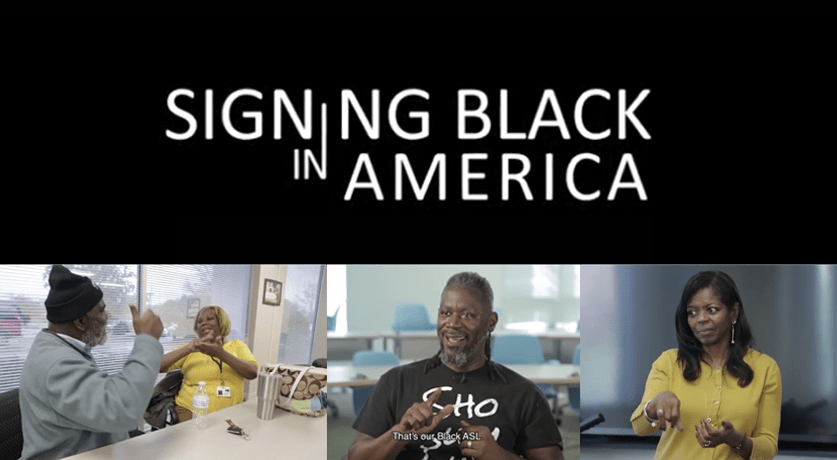
By Molly Loughman
Raising awareness and celebrating cultural linguistic diversity in the deaf community, Emerson’s Department of Communication Sciences & Disorders (CSD) hosted a virtual film screening and discussion with the researchers and producers of the first documentary ever on Black American Sign Language (ASL), ‘Signing Black in America.’
Developed within historically marginalized deaf communities, Black ASL is a vibrant dialect that uniquely uses space, hand gesture, directional movement, and facial expressions. The 30-minute film, shown by PBS stations nationwide, shows how African American Deaf communities embrace their unique variety as a symbol of solidarity and a vital part of their identity.
“Signing Black in America gives us a window into the world of a historically segregated and more marginalized group of people,” said Emerson President Lee Pelton, during his introduction of the event, which attracted nearly 200 students, faculty, and friends. “Today’s discussion gives us the opportunity to reflect deeply and profoundly on issues of identity, of community, of diversity and inclusion.”
The discussion panel featured several scholars and producers of Signing Black in America. Together they also co-authored The Hidden Treasure of Black ASL, originally published in 2011 as the first sociohistorical and linguistic study of this language variety.
- Carolyn McCaskill, Professor of Deaf Studies, Director of the Center for Black Deaf Studies, Gallaudet University
- Ceil Lucas, Professor of Linguistics, Gallaudet University
- Joseph Hill, Assistant Dean, National Technical Institute for the Deaf, Rochester Institute of Technology
- Robert Bayley, Professor of Linguistics, University of California, Davis
Signing Black in America began screening in 2020 and is the first episode of a four-part miniseries following the 2017 feature-length documentary Talking Black in America. Both productions are part of the Language and Life Project, based at North Carolina State University, which explores languages and dialects across the United States.
The following questions are just some of the many posed to panelists by the audience. Answers have been edited for length and clarity.
Is there active research about Black sign language? And if so, are the findings being published and disseminated to practitioners?
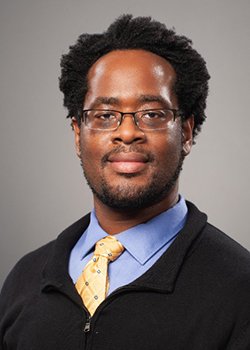
Joseph Hill: “I’m currently working on two projects. One is a project that Dr. McCaskill and I started quite a while ago—analyzing linguistics among Black deaf families. We’ve given several presentations on this, and we plan to do more. Secondly, regarding my particular interests, which is language attitudes and ideology—my dissertation topic back in 2012. At that time, I had used a video of actual people in actual situations, but I think there were some limitations because of the different characteristics of these signers. That work has become much more technology-based at RIT, incorporating motion detection, animation and graphics to analyze the signing characteristics of the subject. We’ll look at things such as if this person’s Black, if this person’s hearing or deaf…. We’re encapsulating all of these identities and characteristics to see what the data says about that and see if the signing styles are similar or if they’re different. And if they’re different, why? And so to answer your question, we know that signs may be the same, yet the characteristics have different nuances. So maybe people say one thing differently, even though the signs are the same. So, yeah, it’s an interesting study. I’m sharing that and a number of other Black ASL resources at my faculty website.“
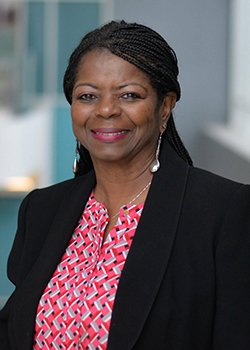
Carolyn McCaskill: “Last fall, we established the Center for Black Deaf Studies at Gallaudet University, and we have set a goal to ensure that we are disseminating research based around our history, our language, so that Black Deaf people can be recognized. We also are working closely with our colleagues, looking for a few grants to be able to create a Black ASL dictionary. We want to provide some more information so that teachers can really train and learn about Black ASL, because right now there is none. We’ve gotten so many requests on courses or classes for Black ASL, and right now there’s no curriculum. Instead, we learn through family and friends through socialization, picking it up by just being around. There’s no official class that can be taken. So we hope to start the BASL dictionary project this year.“
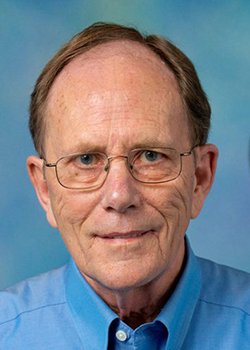
Robert Bayley: “One of the more important things that came out of this project is that in many respects, the features of Black ASL are closer to the dictionary forms, with much more two-handed signing. So this is taking a lot of the pathologizing of Black language that we’ve had to contend with and turning it around on its head and saying, ‘Wait a minute, this is more traditional, more standard.’ Now we know why that’s the case—it’s a paradoxical effect of racism and a stunning misapplication of Darwinism in the 1880s. Sign was viewed as lower on the evolutionary scale than speech. And so signing was OK for a lot of Black kids or Native Americans, but not for white kids. So somehow Black kids in the South got signing — now it wasn’t a good education — but at least it was comprehensible in a more formal environment than white kids in oral schools did not.“
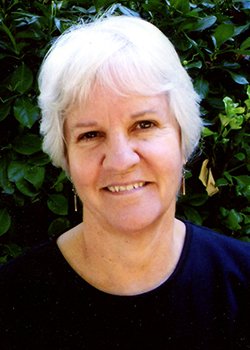
Ceil Lucas: “And just to follow up on that. As far as we know, the first Deaf school was founded in Connecticut in 1817 and until the 1880s, everything was great because there was signing allowed in the classroom and it was fine. But when oralism came in, in the 1880s, a lot of the the white deaf teachers lost their jobs because signing was not allowed in the classrooms anymore and they didn’t want Deaf people teaching Deaf kids. So some of the white Deaf teachers made their way to the Black schools. And the powers that be didn’t really care whether Black kids ‘benefited’ from oralism or not. So these kids were getting signing teachers, Deaf teachers in the classroom. Now, had it been paired, as Bob said, with a really good academic program, it would have been perfect. But these kids were also being taught, expected to learn how to do laundry and repair shoes and work in the fields… So it’s a complicated history”.
What strategies would you suggest to support educators in validating Black sign language in schools today, particularly in schools where the children are predominantly Black and brown and the teachers are predominantly white?
Joseph Hill: “I think it’s important to recognize language and how it’s living, it’s a living thing, it evolves and it’s normal to happen. It changes over time. When we think about cultures and how they change, naturally, language changes as well. And again, that is very normal. I agree with Carolyn and everyone else in their comments about it being endangered. I doubt that highly. We see that these communities are coming together and truly embracing it. They’re having a sense of identity. They’re really acknowledging and embodying who they are as black deaf people. And so, yeah, maybe a few years ago that may have been a different story. But today with technology, I am very excited to see a lot of people using technology and their social media platforms to share their language with one another. And we see things like, for example, the sign, ‘Turn up.’ And I saw this sign before and I thought that was so interesting when I saw someone sign it. It was so fitting. And so it spreads and it spreads to these different communities, which is very, very valuable. I do want to see more of that. There is a way for us to preserve it via the Internet. And this is something that, unfortunately for those in prior generations, didn’t have this opportunity to preserve the language through means such as video. Technology wasn’t as advanced back then, or it cost a lot of money. Now we can easily record, preserve and share it. That gets me very excited for what’s more to come.“
When putting together ASL assessments, is anyone considering the variation, so we don’t misinterpret a student’s signing variation as an error for example?
Joseph Hill: “Assessments typically mirror the curriculum. I used to teach ASL, which means I would have to follow whatever ASL materials were provided in the classrooms, and often this material had a variety of signing in them. The material wasn’t based in one location, so some varied in the western part of the nation, some in the eastern part. As a teacher, it’s important to recognize what you’re teaching to your students and how it fits into that local area. So when we talk about assessments, we have to recognize that signs aren’t always standard. We want to make sure that we’re assessing and we’re evaluating the signs that are common to those communities…so that the person who’s being assessed, it’s not docked against them. I don’t think it’s necessarily possible to know all variations of sign language, but even today, I think the more you know, the better. We see that language changes and language evolves. And therefore, curricula would have to change.”
Carolyn McCaskill: “Honestly, no. Dr. Laurene Simms recently hosted a webinar titled, ‘Is ASL too white?’ It was a huge discussion space on how ASL is used, and how it’s truly evaluated with Black and indigenous people of color. My personal concern is that it’s time for these programs to start reevaluating how they evaluate. How are they truly recognizing the skills if there is no real standard per say? So signing can be buried. BIOPIC people have a specific signing style, including those who are Black or African American. So you want to have space for that dialog—to truly dissect how evaluations are made.“
Is it considered inappropriate for a white interpreter to take on Black linguistic variations if they’re working with a Black Deaf presenter or a Black Deaf consumer.
Joseph Hill: “I think it depends on the situation, and that it’s similar to the hearing community. Let’s look at African-American vernacular English. If a Black person grows up in a white environment, naturally they embody or they take on the language that is available to them. They may be familiar with language or culture, but they know their place in these communities. And so that’s that person’s experience. And regarding Black ASL, if you live in a state where there’s white interpreters who socialize with Black senior citizens or socialize with the Black, Deaf, older community, and they’re learning these languages from these community members, then in a way, they’re connected to the community. So they’re making an effort to truly learn from these people, from these communities. And I think that’s a different narrative than those who don’t know or those who are just making up their own ideas of what they think Black ASL looks like. And I think it requires us to have authentic relationships with people in those communities and be respectful and wait for an invitation into those communities.“
Carolyn McCaskill: “There are some situations where it is quite difficult to find a Black interpreter. Sometimes you’re just stuck and you’re not able to find someone and you have to accept a white interpreter. It’s important that the interpreter really check in with themselves. ‘Is this appropriate for me? Do you feel that you will be able to be successful in this environment? Are you comfortable? Are you aware of the signs?’ There are some issues that may come up that are sensitive and that person may feel that they’re not the right pick for the assignment.”
Categories